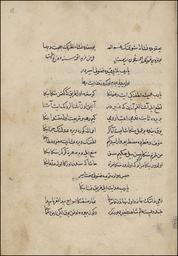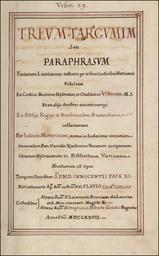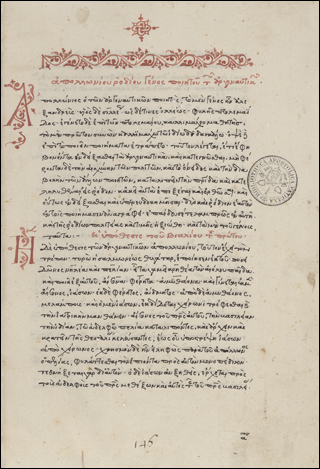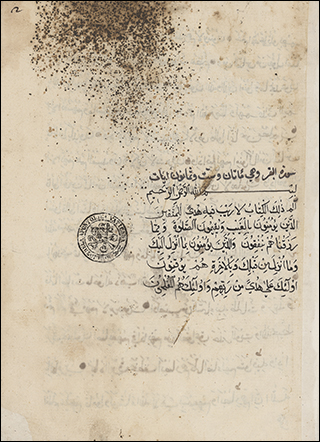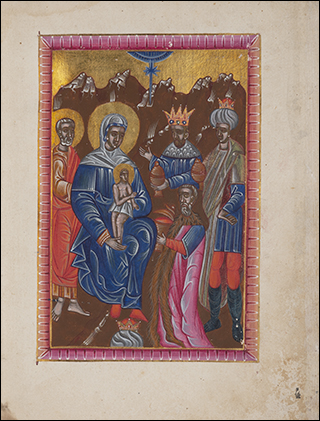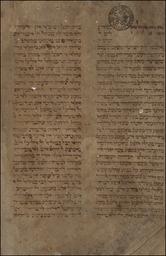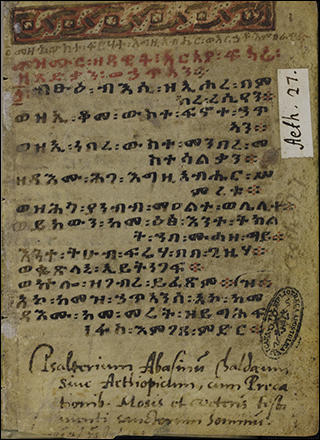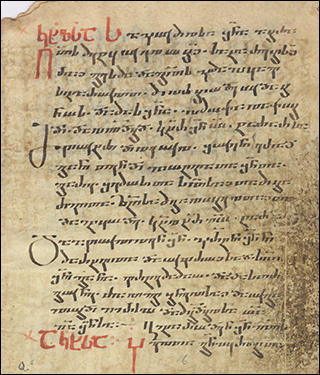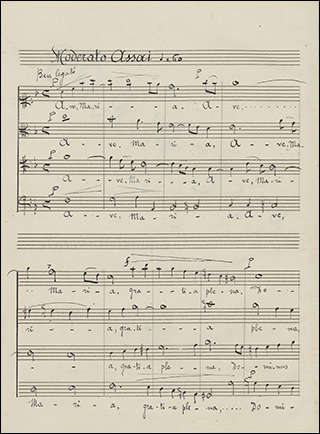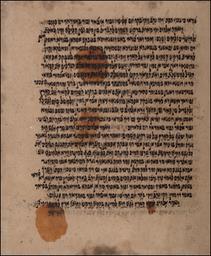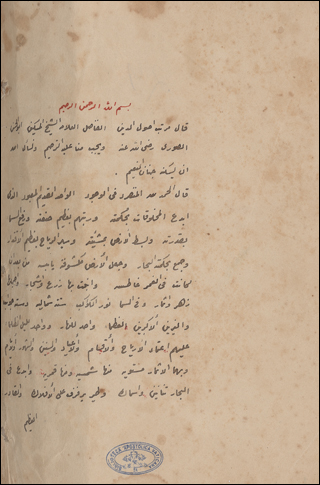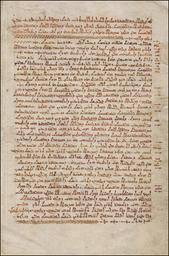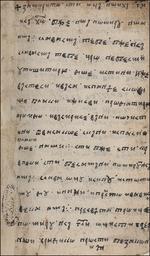BAV Manuscripts By Fond
The digitized manuscripts of the Vatican Library, organized by fond. Fond is a term for the subcollections by which the library is organized. Some, such as the Rossiani, are from collections donated to, or bought by, the library. Others, such as the Archivio del Capitolo di S. Pietro are from smaller libraries within the overall historical Papal organization. Finally there are open collections, such as the Vaticani, which are still growing with new additions. These are further subdivided into language fonds, such as Vaticani Latini.
The archives of the chapter of St. Peters, which trace their origins to a privilege granted in 1053 by Pope Leo XI. It was transferred to the BAV in 1940 by Pope Pius XII, according to the wishes of the recently deceased Pius XI. Of the collection, some items relate to the business of the Chapter, including mutliple rent and property registers, accounting documents, etc. There are also a number of liturgical manuscripts for the use of the Chapter, including a series of lavish 16th C Antiphonals and manuscripts relating to the history of the city of Rome and St. Peters in particular. Unusually, this vast majority of these MSS have excellent metadata in the online catalogue. Sadly due to technical issues this site does not have good tracking data for when these were digitized, the bulk of them can be seen in a two week stretch in 2019, week 32 and week 33
There are currently 471 manuscripts digitized out of a total of 494 signatures.
Sources
Biblioteca apostolica vaticana. (2011). Guida ai fondi manoscritti, numismatici, a stampa della Biblioteca vaticana. Biblioteca apostolica vaticana. pp. 333-336
http://www.mss.vatlib.it/arch_gui/console?service=detail&id=1
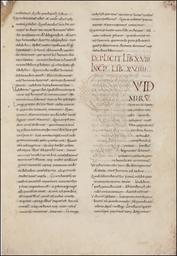
Contains 630 autographs of 608 people, sorted alphabetically in 29 albums, of which only 2 have been digitized, and these only from microfilm. These represent important people, both Catholic and non-Catholic who were important in the intellectual and spiritual realms of the 18th-20th C and were given to pope Paul VI on Sept. 26, 1977, his 80th birthday.
Sources
Biblioteca apostolica vaticana. (2011). Guida ai fondi manoscritti, numismatici, a stampa della Biblioteca vaticana. Biblioteca apostolica vaticana. pp. 469-470
The Barberini collection was started by Maffeo Barberini (Pope Urban VIII) and his Cardinal nephew Francis in the mid 17th Century. At its peak, the collection held roughly 10,000 manuscripts and 50,000 printed books. After the extinction of the Barberini-Colonna family at the end of the 19th C, the collection was sold to the Vatican in September 1902. The Greek collection consists of two sections, Barb.gr.1-281, which are primarily secular works, and Barb.gr.282-590 which are religious in nature. The last 8 shelfmarks come from other parts of the collection and were shifted to the Greek fond after its acquisition by the Vatican. The origins of much of the collection are not well understood, but are likely documented in the rich collection of the Barberini Archives, also held by the Vatican.
There are 522 manuscripts of the 594 remaining of the original 598 signatures. Numbers 557-560 were transfered into Barb.or as 161-164.
The image to the right is Allegory of Divine Providence and Barberini Power, by Pietro Cortona, from the Palazzo Barberini in Rome. (source)
Sources
Biblioteca apostolica vaticana. (2011). Guida ai fondi manoscritti, numismatici, a stampa della Biblioteca vaticana. Biblioteca apostolica vaticana. pp. 340-344
Giblin, Cathaldus. "Vatican Library: MSS Barberini Latini: A Guide to the Material of Irish Interest on Microfilm in the National Library, Dublin." Archivium Hibernicum 18 (1955): 67-144. Accessed March 17, 2020. doi:10.2307/25487306.

The Latin section of the Barberini collection is the largest, with 11,072 signatures, representing 11,062 items and about another 250 objects without proper signatures. Of these 2294 have been digitized so far. The collection is the largest closed fond of the Vatican, and the second largest collection overall, with only Vat.lat being larger. It was assembled by Maffeo Barberini, Pope Urban VIII, but also other members of his family, in particular by his cardinal nephew Francesco, but also Cardinal Antonio Sr, the uncle of the pope and a Capuchin Monk, and Antonio Jr, Francesco's brother. The fond can roughly be devided into two parts, the first 5,000 volumes being a mix of antiquities, historical books and literature, and the remaining 6,000 volumes consisting of correspondence and other documents relating to Francesco's diplomatic and other activities for the Holy See.
Of particular note are Acts of the Consistory, Barb.lat.2867-2933, documents relating to the history of the Index, Barb.lat.3146-3151, and more than 100 volumes related to the Council of Trent, Barb.lat.794-897.
Sources
Biblioteca apostolica vaticana. (2011). Guida ai fondi manoscritti, numismatici, a stampa della Biblioteca vaticana. Biblioteca apostolica vaticana. pp.344-347
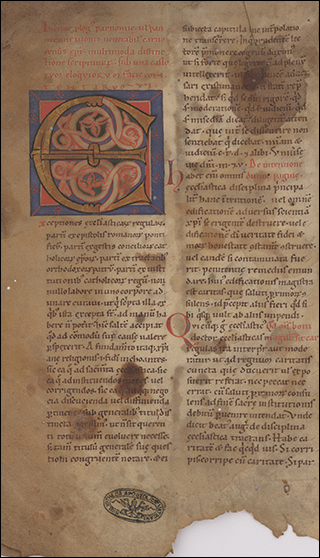
The Barberiniani Orientali collection contains 165 signatures, with 73 digitized so far. These include works in Arabic, Hebrew, Syriac, Chinese and Japanese. It includes the amazing Barb.or.2, a 5-language psalter in Ethiopic, Syriac, Coptic, Arabic and Armenian. To the right is f.155r, which contains the start of Psalm 14.
Sources
Biblioteca apostolica vaticana. (2011). Guida ai fondi manoscritti, numismatici, a stampa della Biblioteca vaticana. Biblioteca apostolica vaticana. pp. 348-351

The families Boncompagni and Ludovisi were joined in with the marriage of Duke Gregorio I Boncompagni and princess of Piombino, Olimpia Ippolita Ludovisi in 1681 and their archives and libraries were combined. These collections predate the union, however, with sections of the archive dating to the 14th C. Both families originate in Bologna, the Boncompagni moving to Rome in the late 16th C with Ugo rising through the Curia to become Pope Gregory XIII in 1572. The Ludovisi moved to Rome in the 17th C, Alessandro leaving again in 1612 to become Archbishop of Bologna, and returning in 1621 as Pope Gregory XV. After negotiations, Prince Francesco Bongompagni Ludovisi donated the archives and libraries to the Vatican in August 1947, though the actual physcial transit lasted until 1952. The archives and library were seperated to the BAV and the Archivo Apostoli, though the ctiteria are unclear.
Currently 36 manuscripts have been digitized out of the 911 manuscripts in the collection. These are spread across 919 shelfmarks, the disposition of the remaining 8 manuscripts is unknown.
Sources
Biblioteca apostolica vaticana. (2011). Guida ai fondi manoscritti, numismatici, a stampa della Biblioteca vaticana. Biblioteca apostolica vaticana. pp. 352-354
http://www.archivioapostolicovaticano.va/content/aav/en/attivita/ricerca-e-conservazione/progetti/inventariazione/archivio-boncompagni-ludovisi.html
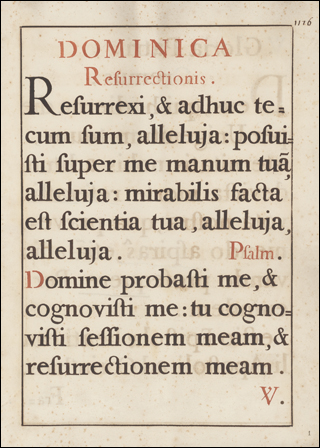
Currently there are 76 of the 278 signatures in the collection digitized. The Arabic collection is one of the larger non-Latin collections within the Borgiani, second only to the Chinese in terms of size. It has particular strengths in Arab-Christian works, including two particularly old copies of the Gospel in Arabic: Borg.ar.71 from the 11th-12th C and Borg.ar.95 from the 9th C. F.60v from the later one can be seen to the right. In the 17th C the collection grew through acquisitions from the personal collection of Card. Camillo Massimo (1620- 1677) and also from the closing of the Maronite College in Ravenna in 1665.
There is an early catalogue in cards of the collection in Vat.lat.13206, ff. 300r-343v, of Borg.ar.1-29, 31-41, 100, 213, written by Francesco Mari (1873-1934). Furthermore Borg.lat.767, ff. 117r- 124r, has a handwritten topographical inventory of the Arabic codices of the Museo Borgiano di Propaganda.
Biblioteca apostolica vaticana. (2011). Guida ai fondi manoscritti, numismatici, a stampa della Biblioteca vaticana. Biblioteca apostolica vaticana. pp. 360-361

Currently there are 79 of the 88 signatures in the collection digitized. Only three of these seem to come from Borgia's private collection, # 54, 60 and 61. Other volumes were donated across the 17th and 18th C, with the some of the latest donations, Borg.arm.68, 70, 73 and 85, coming in 1893, from Joseph (Yovsêp‘) Ferahian, bishop of Diarbekir (Diyarbakìr).
To the right is a little marginal Mary Magdalene from f.44v of Borg.arm.8, a 17th C hymnal
Biblioteca apostolica vaticana. (2011). Guida ai fondi manoscritti, numismatici, a stampa della Biblioteca vaticana. Biblioteca apostolica vaticana. p. 362

Currently there are 10 nautical maps of the 13 maps in the collection. Although the numbering goes up to XVI, according to a note from José Ruysschaert numbers XII, XIV and XV never reached the library. In the inventory preserved in Borg.lat.767, on ff. 253r-254r, the full sixteen are listed.
Sources
Biblioteca apostolica vaticana. (2011). Guida ai fondi manoscritti, numismatici, a stampa della Biblioteca vaticana. Biblioteca apostolica vaticana. pp. 362-363
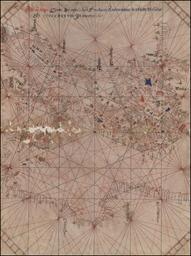
Currently there are 49 of the 538 signatures in the collection digitized. It is the largest of the foreign (non-Latin) language collections and reflects Stefano Borgia's interest in sending missionaries to China. The bulk of the books are printed, and two are, actually, in Japanese, Borg.cin.501, 520. The collection of Antonio Montucci (†1829) was acquired by the Congregazione de Propaganda Fide, including his hand-engraved printing blocks for Chinese. This subcollection is catalogued in Borg.cin.396.
To the right is the first page of Borg.cin.394, a letter from the court of King George III of England to the Chinese emperor. The hand-written transliterations are in the hand of Montucci himself, made when he copied the text while still in London, probably in 1804.
Biblioteca apostolica vaticana. (2011). Guida ai fondi manoscritti, numismatici, a stampa della Biblioteca vaticana. Biblioteca apostolica vaticana. pp. 363-365

Currently there are 149 of the 137 signatures. This may seem impossible, except that Borg.copt.109 seems to have been a holding shelfmark, containing two volumes and twenty-nine boxes of fragments. Each of those fragments is recorded seperately in the online archive, eg. Borg.copt.109.cass.XXVI.fasc.135 representing the 135th fragment in the 26th box.
Sources
Biblioteca apostolica vaticana. (2011). Guida ai fondi manoscritti, numismatici, a stampa della Biblioteca vaticana. Biblioteca apostolica vaticana. pp. 365-367
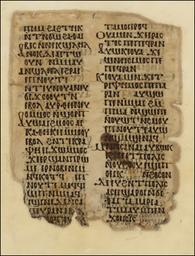
Currently there are 18 of the 21 signatures. Only one of these, Borg.ebr.17 was actually part of the collection of Stefano Borgia, the bulk of this fond was donated by Giovanni Pastrizio/Ivan Paštriò (1636-1708), a professor of Hebrew and Greek at the Collegio Urbano di Propaganda Fide. One manuscript, Borg.ebr.14, was donated in the 19th C by a librarian at the College, Paul Louis Bernard Drach, who also supervised an inventory of the entire Borgiani collection, now Borg.lat.767
To the right is the text of "The Song of the Sea" (Ex. 15:1-18) from f.45r of Borg.ebr.17, a 13th C Ashkenazic Torah/Haftorah manuscript, with marginal commentary (Masorah). Here the scribe has stopped the three-column layout in use for the rest of the text and followed the wave-like layout found for this text in Torah scrolls.
Sources
Biblioteca apostolica vaticana. (2011). Guida ai fondi manoscritti, numismatici, a stampa della Biblioteca vaticana. Biblioteca apostolica vaticana. p. 368
Richler, B., Beit-Arié, M., Pasṭernaḳ, N., Biblioteca apostolica vaticana, & Makhon le-tatslume kitve-ha-yad ha-ʻIvriyim. (2008). Hebrew manuscripts in the Vatican Library: Catalogue. Biblioteca apostolica Vaticana. Studi e Testi 438

One single object, a copy of an ancient Egyptian papyrus at the Borgiano Museum. dated to 1920. The source of the copy is unknown
Sources
Biblioteca apostolica vaticana. (2011). Guida ai fondi manoscritti, numismatici, a stampa della Biblioteca vaticana. Biblioteca apostolica vaticana. pp. 368-369
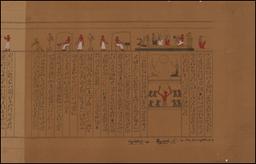
Currently there are 6 of the 37 signatures in the collection digitized. The genesis of the collection came from the Ospizio di S. Stefano dei Mori/S. Stefano degli Abissini in Rome, through ownership by the Chapter of the Vatican in 1729 to the Propaganda Fide in 1759. These manuscripts are Borg.et.2, 3, 28, 29, 31, 36, 37. Manuscripts Borg.et.22-27 came from Stefano Borgia's collection and Borg.et.35 was his personal donation while still Secretary.
Sources
Biblioteca apostolica vaticana. (2011). Guida ai fondi manoscritti, numismatici, a stampa della Biblioteca vaticana. Biblioteca apostolica vaticana. pp. 369-370
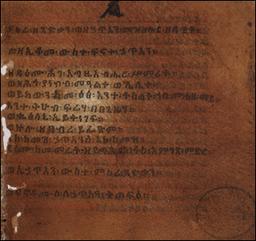
Currently there are none of the fourteen manuscripts in the collection digitized. Of these only 2, Borg.georg 1 and 4, came from Stefano Borgia. There is one additional shelfmark, Borg.georg.3, which was a Bible printed in St. Petersburg. This was transferred to the printed works collection to become S. Scritt. I georg. 1 (3) Cons.
Biblioteca apostolica vaticana. (2011). Guida ai fondi manoscritti, numismatici, a stampa della Biblioteca vaticana. Biblioteca apostolica vaticana. pp. 370-371
Currently there are 8 of the 27 Signatures in the collection digitized. Of these ten manuscripts were part of the collection of Stefano Borgia, Borg.gr.6,7,9,10,11,12,18,19,21,22 and the rest were later acquisitions. The final codex entered the collection as a donation to Pope Pius VII from Maximos III Mazlum, Melkite Archbishop of Abydos, Mira and eventual Patriarch of Antioch.
The image to the left containst the 4th-6th membranes of Borg.gr.27, a liturgical roll made in Salerno between 1085 and 1111. The various membranes have been dyed shades of red and black, and written on with silver and gold ink. Although in Greek, it was comissioned long after Byzantine control of Sicily ended, and is datable by reference to Duke Roger of Sicily.
Sources
Biblioteca apostolica vaticana. (2011). Guida ai fondi manoscritti, numismatici, a stampa della Biblioteca vaticana. Biblioteca apostolica vaticana. p. 371

Currently there are 10 of the 23 signatures in the collection digitized. Contains elements from the original Illyrici and Rutheni categories
Sources
Biblioteca apostolica vaticana. (2011). Guida ai fondi manoscritti, numismatici, a stampa della Biblioteca vaticana. Biblioteca apostolica vaticana. pp. 371-372
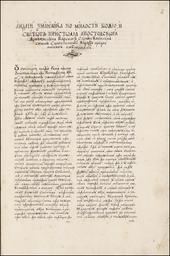
Currently there are 71 of the 71 items in the collection digitized. There are 74 shefmarks, but Items 15, 17 and 24 were transfered to become Borg.tonch 23, 41 and 24. This collection contains an assortment of languages from southern and eastern Asia, including Burmese, Cambodian, Hindi, Malayalam, Nepalese, Pali, Sanskrit, Thaii, Tamil, Tibetan, and Urdu.
Sources
Biblioteca apostolica vaticana. (2011). Guida ai fondi manoscritti, numismatici, a stampa della Biblioteca vaticana. Biblioteca apostolica vaticana. pp. 372-375
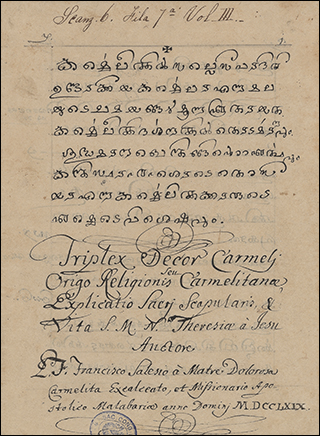
Of the two signatures, 0 have been digitized. The first, Borg.irl.1 was given to Stefano Borgia on Jan. 12, 1802 by John Connolly, long-time prior of the Irish Dominicans of S. Clemente in Rome and, after 1814, bishop of New York. Nothing is known of the provinance of the other manuscript.
Sources
Biblioteca apostolica vaticana. (2011). Guida ai fondi manoscritti, numismatici, a stampa della Biblioteca vaticana. Biblioteca apostolica vaticana. p. 375
Only one manuscript, given to Stefano Borgia by the Danish scholar Jakob Georg Christian Adler. A 1788 letter from Adler to Borgia describing the manuscript is preserved in Borg.lat.895, ff.20r-v
Sources
Biblioteca apostolica vaticana. (2011). Guida ai fondi manoscritti, numismatici, a stampa della Biblioteca vaticana. Biblioteca apostolica vaticana. p. 375
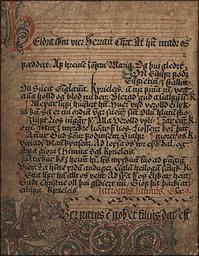
Currently there are 87 of the 909 items in the collection digitized. The shelfmarks go to 910, due to the counting of the former Borg.lat.5 which was tranfered into the Arabic fond to become Borg.ar.276.
The image to the right is ff.3v-4r from Borg.lat.420 the coronation ordo from the coronation of Holy Roman Emperor Charles the V. His coronation, in 1530, was the last papal coronation of a Holy Roman Emperor.
Sources
Biblioteca apostolica vaticana. (2011). Guida ai fondi manoscritti, numismatici, a stampa della Biblioteca vaticana. Biblioteca apostolica vaticana. pp. 376-377

This fond only contains 2 signatures. The first is a ritual text on buckskin in Nahua that was studied at the end of the 18th C by José Lino Fábrega, a former Jesuit missionary to Latin America who had returned to Rome. Due to the death of Stefano Borgia, it was not published until 1891. The second volume is a copy of the Cospiano Codex (Bologna, Biblioteca Universitaria, ms. 4093). In the original Borgia museum there was a third volume, now Borg.lat.763 which is a text describing Mexican fruits.
Sources
Biblioteca apostolica vaticana. (2011). Guida ai fondi manoscritti, numismatici, a stampa della Biblioteca vaticana. Biblioteca apostolica vaticana. pp. 377-378
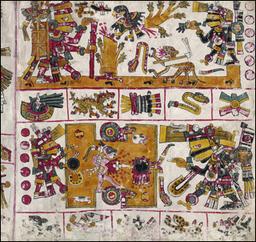
Currently there are 7 of the 23 items in the collection digitized. There are 25 signatures but numbers 1 and 22 were transferred to the Borg.turc fond to become # 82 and 83. Interesting manuscripts in the collection include a pair of Persian Gospels in Borg.pers.18,19 and Borg.pers.15, a Latin-Persian dictionary prepared for printing in the middle of the 17th century by the Discalced Carmelite Ignatius of Jesus (1596-1667), but never actually printed. The start of the A section of this manuscript, f.8r, can be seen to the right. The three columns consist of the source word in Latin on the left, the translation into Persian on the right, and a transliteration of that, in the middle.
Biblioteca apostolica vaticana. (2011). Guida ai fondi manoscritti, numismatici, a stampa della Biblioteca vaticana. Biblioteca apostolica vaticana. pp. 378-379

Both of the items in the collection have been digitized. They are, in fact, two copies of the same text, the Actus Fidei, Spei, Charitatis, translated into Thai on the orders of Stefano Borgia. The second codex is an updated translation sent back to Rome from the Apostolic Vicar in Bangkok, Olivier Simon Le Bon (1710-1780)
Sources
Biblioteca apostolica vaticana. (2011). Guida ai fondi manoscritti, numismatici, a stampa della Biblioteca vaticana. Biblioteca apostolica vaticana. p. 380
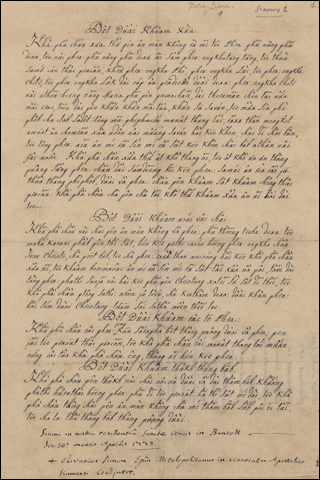
Currently there are 45 of the 178 items in the collection digitized. The shelfmarks count to 181, including the following volumes that were transferred away, Borg.sir.66 became Borg.ar.275, Borg.sir.140 became Borg.copt.135 and Borg.sir.140 became Borg.et.35.
Sources
Biblioteca apostolica vaticana. (2011). Guida ai fondi manoscritti, numismatici, a stampa della Biblioteca vaticana. Biblioteca apostolica vaticana. pp. 380-382
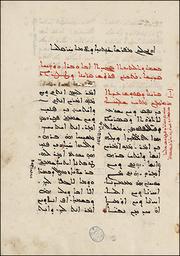
Currently there are 41 of the 41 volumes in the collection digitized. Volumes 1-21 and 24 came from the Vietnamese Jesuit Felippe do Rosario (nee Philipé Binh, 1759-1832). Work is ongoing to catalogue these in English
Sources
Biblioteca apostolica vaticana. (2011). Guida ai fondi manoscritti, numismatici, a stampa della Biblioteca vaticana. Biblioteca apostolica vaticana. pp. 382-383
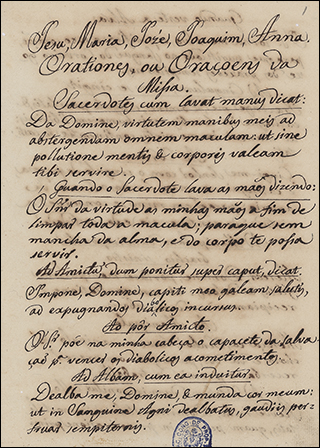
Currently there are 11 of the 83 volumes in the collection digitized. The shelfmarks count 85, as Borg.turc.11 became Borg.pers.25 and Borg.turc.71 was split into Borg.ar.17 and Borg.lat.765.
Sources
Biblioteca apostolica vaticana. (2011). Guida ai fondi manoscritti, numismatici, a stampa della Biblioteca vaticana. Biblioteca apostolica vaticana. pp. 383-384
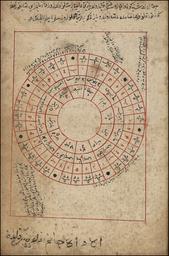
The familial collection of the Borghese family, with the addition of parts of the Pontifical library at Avignon. Though the library in Avignon had over 2000 volumes, not all of these returned with Benedict XIII. The remining volumes were slowly dispersed and the final 329 were given by Pope Paul V to Scipio Caffarelli Borghese, Cardinal Legate to Avignon. It was purchased by the Vatican in 1891. The image to the right is from the title page of a copy of Aristotle's Logica Nova, Borgh.130 f.1r. Within the initial 'P' of "Primum opertet" the author is shown teaching.
Currently there are 388 of the 386 items digitized, though the shelfmarks count 390 items. The last items in the Fond are catalogues of the collection made between the 17th and 19th C, and were only transfered into it later. These are shelfmarks 377-379, 382- 386, 388-390.
Sources
Biblioteca apostolica vaticana. (2011). Guida ai fondi manoscritti, numismatici, a stampa della Biblioteca vaticana. Biblioteca apostolica vaticana. pp. 354-356
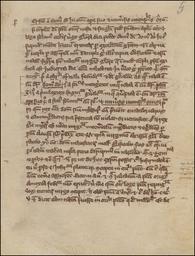
Of the 1293 signatures in the fond, only 1287 items are still held, and of these 91 have been digitized. This collection is one of the only two in the Vatican that exclusively contains music, the other being Vat.mus. It was the library of the Cappella Giulia, officially called Reverend Musical Chapel Julia of the Sacrosanct Papal Basilica of Saint Peter in the Vatican. This is the choir that sings all the Liturgy at St. Peters when the pope is not in attendance. The collection spans the 16th through the 20th C, and the majority of the books are printed. The collection was transferred to the Vatican libraries in 1941, despite the strenuous objection of the then Master of the Chapel, Ernesto Boezi.
At the moment, most of the digitized copies are simply scans of microfilm, though a few are in color including the beautiful Medici Chansonnier, Capp.Giulia.XIII.27. To the right is the first page of music, f.7v
Sources
Biblioteca apostolica vaticana. (2011). Guida ai fondi manoscritti, numismatici, a stampa della Biblioteca vaticana. Biblioteca apostolica vaticana. pp. 384-388

The Cappella Sistina, the papal choir named for Pope Sixtus IV, was established as the Cappella Musicale Pontificia to sing in the Cappella Magna, later Sistine Chapel. It containts 709 signatures, but only 708 elements. Of these 546 are musical works (402 are true manuscripts and 144, broken up into 206 signatures, are printed), an additional 101 items are archival materials, and the remaining are several catalogues. At the moment, 359 have been digitized
Josquin des Prez served as choirmaster and composer at the end of the 15th C. It includes Capp.sist.611, a copy of the constitution explaining the responsibilities of the Sistine singers from 1545, the earliest copy of such a document ^2
To the right is f.2v from Capp.Sist.160 a book of polyphonic mass music, in mensural notation, written around 1515-1521. It was later presented to Pietro Ottoboni, whose personal library forms the Ottoboni fond
Sources
Biblioteca apostolica vaticana. (2011). Guida ai fondi manoscritti, numismatici, a stampa della Biblioteca vaticana. Biblioteca apostolica vaticana. pp. 393-395

This collection of 299 signaturest tracks the fines levied by the Puntatori-Segretari of the Collegio della Cappella Pontifica from 1535-1897. Work began on digitizing them in late 2024 with a total of 245 now online
Sources
Biblioteca apostolica vaticana. (2011). Guida ai fondi manoscritti, numismatici, a stampa della Biblioteca vaticana. Biblioteca apostolica vaticana. pp. 396-397

The Capponiani collection consists of 318 signatures covering 313 objects. Excepting a few outliers and some residual scanned microfilms, nearly the entire fond has been digitized, 302 MS in total. The collection was received by the Vatican in two pieces, the first segment was bequeathed in 1746, at the death of Alessandro Gregorio Capponi, and was catalogued at the end of the 19th C by Giuseppe Cozzo1, which is now freely available. The second part was given by Capponi to his sister, Maria Anna Capponi who was married to the Count Antonio Cardelli. It was passed to their son Francesco Maria Cardelli, and stayed in the Cardelli family until 1958, when it was bought by the Vatican from Carlo Cardelli. Upon recipt it was appended to the existing Capponiani collection, beginning with codex 287. At that time it was catalogued, and the typescript of that catalogue was added to the collection as Cappon.3182.
Cappon.194 is a Humanist copy of Polibio's Discorso sopra la milizia romana, made for Francesco Maria della Rovere. In f.1r, seen to the right, one sees the title and start of the text in gold over red, blue, and black, written in a humanist cursive.
Sources
Cozzo, G. S. (1897). I codici Capponiani della Vaticana. Tipografia Vaticana. Google Books, Internet Archive or Hathi Trust.
M. H. Laurent. Supplemento al Catalogo "I codici Capponiani della Biblioteca Vaticana" descritti da Giuseppe Salvo Cozzo" Capponiani 287-317 (1958) Cappon.318.
Biblioteca apostolica vaticana. (2011). Guida ai fondi manoscritti, numismatici, a stampa della Biblioteca vaticana. Biblioteca apostolica vaticana. pp. 397-400

With his brother Antoine (1810-1897), Arnauld d'Abbadie (1815-1893) explored Ethiopia from 1838 through 1850. He wrote a multi-volume account of his travels, though only the first volume was published, in Paris in 1868. The remaining text was finally published as Studi e Testi Nos. 286 and 287 in 1980, edited by Jeanne-Marie Allier.
His papers were eventually given to the Capuchin Alberto Rincón-Gallardo in 1942, and then passed to the Vatican in 1966. Of the 19 containers, only 2 have been digitized. There is a detailed description of 19 online.
Sources
Biblioteca apostolica vaticana. (2011). Guida ai fondi manoscritti, numismatici, a stampa della Biblioteca vaticana. Biblioteca apostolica vaticana. p.332
A collection of 74 manuscripts, 53 notebooks and 21 folders from Enrico Stefani (1868-1958) on the Italian archaeological mission in Crete from the first decade of the 20th C. It was added to the Vatican archives in 1969. 2. Of those so far 10 have been digitized.
Sources
Biblioteca apostolica vaticana. (2011). Guida ai fondi manoscritti, numismatici, a stampa della Biblioteca vaticana. Biblioteca apostolica vaticana. pp. 535-536
Buonocore, M. (1988). "Miscellanea epigraphica e Codicibus Bibliothecae Vaticanae". III. Epigraphica, 50, p. 213.
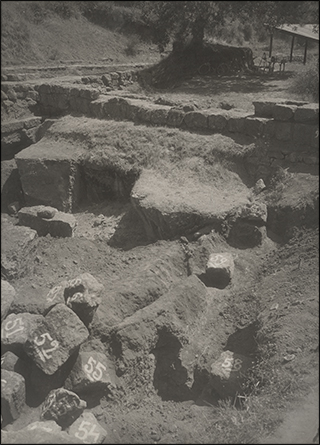
Enrico Cerulli joined in the Fascist goverment installed in Ethiopia in 1926, rising to the post of governer of Harar in 1939. While there he collected a number of manuscripts, and In the 50s and 60s his donations of about 325 Ethiopic manuscripts, of dubious and undocumented provinance, became this collection. Catalogued there are 332 signatures for 329 elements. Numbers 21 and 88 never existed and in 1987 184 and 271 were determined to be part of the same manuscript and combined into 184 pt.A and pt.B. Of these 16 have so far been digitized.
Sources
Biblioteca apostolica vaticana. (2011). Guida ai fondi manoscritti, numismatici, a stampa della Biblioteca vaticana. Biblioteca apostolica vaticana. pp. 400-402
Enrico Cerulli
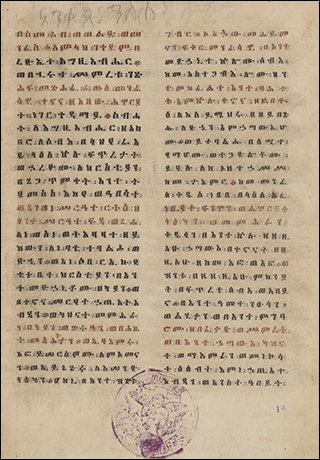
Between 1950 and 1954 Enrico Cerulli was the Italian ambassador to Iran and collected a number of Persian manuscripts. These 1055 manuscripts, of which 13 are, in part or in full, in Turkish, form this collection. It has a particular focus on Shiʿite passion plays (taʿzias), which were unappreciated at the time he formed the collection. 2. Of those 1055 signatures, 24 have been digitized
Sources
Biblioteca apostolica vaticana. (2011). Guida ai fondi manoscritti, numismatici, a stampa della Biblioteca vaticana. Biblioteca apostolica vaticana. pp. 402-403
Enrico Cerulli
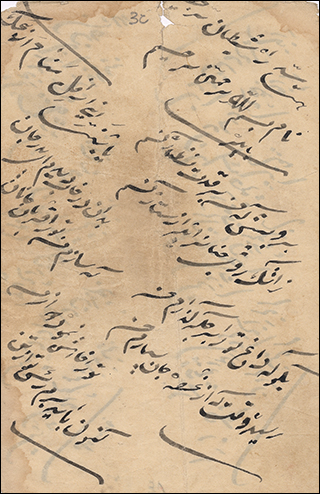
The Chigi library was the personal family collection of the Roman Chigi family, dating from at least the time of Fabio Chigi, Pope Alexander VII and it remained in the family until the 20th Century. The italian state bought th family house and collections at the end of WWI. In the preliminary stages of negotiating the treaty between the Holy See and the the Fascist government, Pietro Tacchi Venturi convinced Mussolini to donate them to the Holy See in 19232.
It contains quite a number of beautiful manuscripts, including Chig.C.IV.111, a Franciscan-influenced Book of Hours decorated by the Workshop of the Master of Ippolita Sforza. More information on the calendar can be found in CoKL DB, and the start of the Lauds to the Hours of the BVM can be seen to the right, f.27v
There are a total of 3636 signatures representing 3626 elements in the fond, of which 638 have already been digitized. This part of the Biblioteca Chigiana coveres Latin, Greek, Slavic and Asian manuscripts.
Sources
Biblioteca apostolica vaticana. (2011). Guida ai fondi manoscritti, numismatici, a stampa della Biblioteca vaticana. Biblioteca apostolica vaticana. pp. 403-409
Pietro Tacchi Venturi

This small collection of approximately 281 manuscripts, spread across 301 signatures, are connected to Daniele Comboni or his congregation, the Comboni Missionaries of the Heart of Jesus. They are primarily in Ethiopic. So far 109 have been digitized.
Sources
Biblioteca apostolica vaticana. (2011). Guida ai fondi manoscritti, numismatici, a stampa della Biblioteca vaticana. Biblioteca apostolica vaticana. pp. 409-410
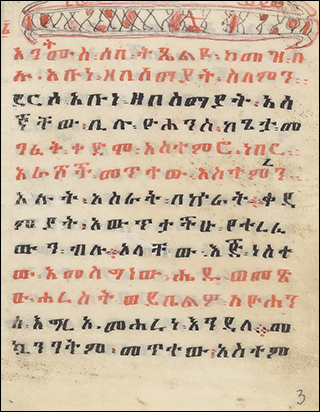
Manuscripts from the personal collection Tammaro De Marinis. Of the 22 signatures, only 2 have been digitized from this collection, one of which is from microfilm. There is a partial listing on the contents in Kristeller's Iter Italicum, Vol 2. This was part of a larger collection, principally printed books, and of that 7 incunabla and 72 Aldine volumes are shelved in Stampati De Marinis.
Sources
Biblioteca apostolica vaticana. (2011). Guida ai fondi manoscritti, numismatici, a stampa della Biblioteca vaticana. Biblioteca apostolica vaticana. pp. 412-413
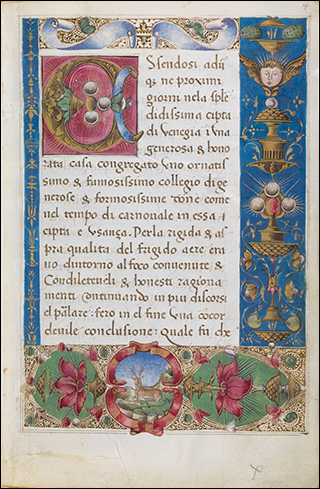
There are 1039 signatures, but only 1038 manuscripts in the collection, which was formed from two donations, the first 22 volumes in 1890 and the remainder in 1926. Of those, there have been 36 digitized so far. The printed manuscripts are held in Stampati Ferrajoli. It was originally the family library of the Ferrajoli family of Rome. The family palazzo, designed by Giacomo della Porta in 1500 still stands in Rome and can be rented for private events.
Sources
Biblioteca apostolica vaticana. (2011). Guida ai fondi manoscritti, numismatici, a stampa della Biblioteca vaticana. Biblioteca apostolica vaticana. pp. 419-420.
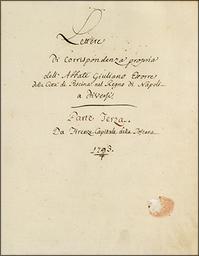
This is a collection of bindings removed from manuscripts held in other collections, there are currently 47 digitized of the 626 elements in the collection. Most of these were removed from their original sources, both manuscript and printed, during rebinding and restoration work conducted under the pontificate of Leo XIII (1878-1903). Where the original manuscript is known, it is made part of the binding shelfmark, eg. Legat.Pal.lat.930 was the originally a binding for Pal.lat.930, the "Older Worms Letter Collection".
Sources
Biblioteca apostolica vaticana. (2011). Guida ai fondi manoscritti, numismatici, a stampa della Biblioteca vaticana. Biblioteca apostolica vaticana. pp. 433-434
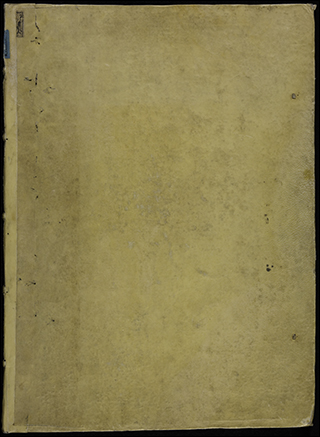
This was the library of the Pia Casa dei Neofiti/College of the Neophytes, which was added to the Vatican holdings in 1891. The college had been founded in 1543 by Pope Paul III for the education of Muslims and Jews, primarily, who had converted. For this reason it contains many Hebrew manuscripts, including the unique Targum Neofiti 1, often simply called the Neofiti Codex. There are 46 manuscripts of the 50 in the collection, spread across 55 signatures
Sources
Biblioteca apostolica vaticana. (2011). Guida ai fondi manoscritti, numismatici, a stampa della Biblioteca vaticana. Biblioteca apostolica vaticana. pp. 444-446
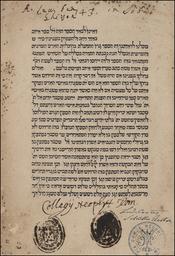
This collection started out as the private library of Pietro Ottoboni(2 July 1667 – 29 February 1740), Cardinal Nephew to Pope Alexander VIII (Born Pietro Ottoboni as well). The Vatican Ottoboni collection was purchased from Pietro's heirs in 1748. In 1797 some 500 manuscripts from this collection were confiscated by French troops, though all but 36 were later returned. The Greek collection contains 475 signatures, but only 473 items, of these only the first 396 were part of the Ottoboni collection proper, the remainder added after its arrival at the Vatican. So far 380 have been digitized.
The collection is very strong in early biblical manuscripts, including two 11th C Minuscule bibles, Ott.gr.297 and Ott.gr.432 (which is dated to 1055). To the right is f.56r from Ott.gr.297, which is the start of the Gospel of Mark
Sources
Biblioteca apostolica vaticana. (2011). Guida ai fondi manoscritti, numismatici, a stampa della Biblioteca vaticana. Biblioteca apostolica vaticana. pp. 450-453

This collection started out as the private library of Pietro Ottoboni(2 July 1667 – 29 February 1740), Cardinal Nephew to Pope Alexander VIII (Born Pietro Ottoboni as well). The Vatican Ottoboni collection was purchased from Pietro's heirs in 1748. In 1797 some 500 manuscripts from this collection were confiscated by French troops, though all but 36 were later returned. The Latin half is the majority of the collection, with 3,400 signatures representing only 3,379 items, of which 1796 have been digitized. In addition to the manuscripts, there are a few printed books shelved within Ott.lat, eg. Ott.lat.577.
Within the collection is one of the three principle witnesses to the poems of Catullus, Ott.lat.1829. To the right is f.1r, where the poet begins "Ad patriam uenio longis afinibus exul, Causa mei reditus compatriota fuit"
Sources
Biblioteca apostolica vaticana. (2011). Guida ai fondi manoscritti, numismatici, a stampa della Biblioteca vaticana. Biblioteca apostolica vaticana. pp. 453-455

The Pontificio Istituto Orientale is a section of the education consortium containting the Pontifical Gregorian University and the Pontifical Biblical Institute devoted to the study of Eastern Christianity. Though the idea was proposed originally by Pope Leo XIII, it was finally founded by Benedict the XV in 1917 and is managed by the Jesuits.
The collection is split into two sub-sections, those shelved as P.I.O and then a secondary sub-fond for Slavic languages under the shelfmark P.I.O.slav. In the online systems these are presented as one collection, so I have continued. In the main P.I.O there are 40 signatues, in the Slav subfond there are an additional 54. From this total, 95 have so-far been digitized.
Sources
Biblioteca apostolica vaticana. (2011). Guida ai fondi manoscritti, numismatici, a stampa della Biblioteca vaticana. Biblioteca apostolica vaticana. p. 499
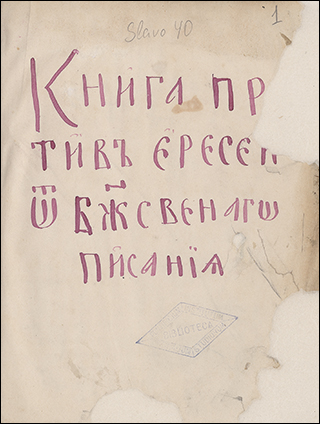
This collection of 102 manuscripts, of which 1 are digitized, was formed by Abbe Étienne Pagès in the early 19th Century. Shortly before his death in 1841 the collection was sold at a substantial discount to the Marists in Lyon in order that it might stay intact, he had some 50 nephews who might wish to convert their inheritance into cash. It was transfered to the Marist residence in Rome in 1902 to support students at the Roman universities.
The page to the right is f.12r (the first page in this oddly foliated manuscript) of Pages.1, a copy of Porphyry's Isagogue
Sources
Biblioteca apostolica vaticana. (2011). Guida ai fondi manoscritti, numismatici, a stampa della Biblioteca vaticana. Biblioteca apostolica vaticana. pp. 455-457

Originally the collection of Heidelberg, it was captured in 1622 during the Thirty Years Wars by the Catholic League in the person of Maximillian of Bavaria, who presented it to the Pope, Gregory XV, to try and convince him to support Maximillian's claim to the throne of the Holy Roman Empire, which is a quick summary of a complex political battle.
The collection was incorporated into the Vatican in 1623, with the addition of a leaf containing the Wittelsbach arms, those of Maximillian. In 1797, the Pope ceded 37 MSS to the French State, these were then given back to Heidelberg after the Congress of Vienna and in 1816 a further 852 volumes, mostly in German, followed from the Vatican. 2 As of 2018 the collection has been fully digitized, 398 items spread across 432 signatures, by the University of Heidelberg for their Bibliotheca Palatina Digital project. The BAV did a large import project at the end of 2023 to make these color scans available within their system as well. Currently 402 have been loaded into the Vatican database, with almost all of the low quality microfilm scans replaced with proper color fascimiles.
Sources
Biblioteca apostolica vaticana. (2011). Guida ai fondi manoscritti, numismatici, a stampa della Biblioteca vaticana. Biblioteca apostolica vaticana. pp. 463-266
Biblioteca Palatina
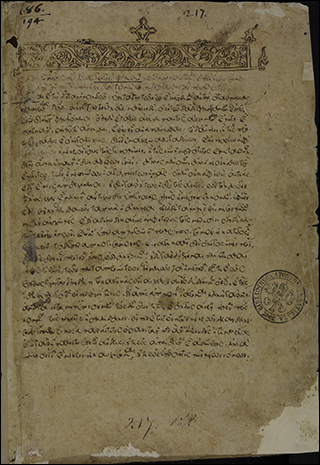
Originally the collection of Heidelberg, it was captured in 1622 during the Thirty Years Wars by the Catholic League in the person of Maximillian of Bavaria, who presented it to the Pope, Gregory XV, to try and convince him to support Maximillian's claim to the throne of the Holy Roman Empire, which is a quick summary of a complex political battle.
The collection was incorporated into the Vatican in 1623, with the addition of a leaf containing the Wittelsbach arms, those of Maximillian. In 1797, the Pope ceded 37 MSS to the French State, these were then given back to Heidelberg after the Congress of Vienna and in 1816 a further 852 volumes, mostly in German, followed from the Vatican. 2 As of 2018 the collection has been fully digitized, 2006 items spread across 2031 signatures, by the University of Heidelberg for their Bibliotheca Palatina Digital project. The BAV has not yet fully imported the images into their repo, with only 2012 represented here.
Catalogues
Medical manuscripts, in the range Pal.lat.1079-1339 - Schuba, Ludwig. Die medizinischen Handschriften der Codices Palatini Latini in der Vatikanischen Bibliothek. Reichert, 1981. Online
17th C Inventory - Salacons.Mss.Rosso.399 (1)
17th C Index by Author from 1678 covering Vols. 1-1956 - Salacons.Mss.Rosso.75
Sources
Biblioteca apostolica vaticana. (2011). Guida ai fondi manoscritti, numismatici, a stampa della Biblioteca vaticana. Biblioteca apostolica vaticana. pp. 466-469
Biblioteca Palatina
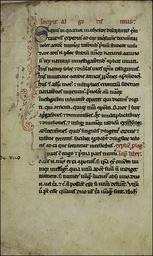
This fond consists of two parts: a single papyrus, numbered Pap.Bodmer.VIII, as it was in the collection of Martin Bodmer, contains a fragment of 1-2 Peter. It was given to Pope Paul VI in 1969 and now resides at the Vatican.
Sources
Biblioteca apostolica vaticana. (2011). Guida ai fondi manoscritti, numismatici, a stampa della Biblioteca vaticana. Biblioteca apostolica vaticana. pp. 470-471
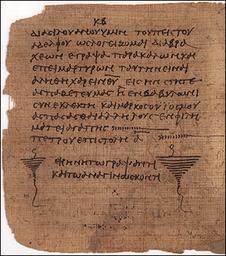
This fond contains a single item, Pap.Borg.aram.1, which is a list of names, date uncertian. It arrived at the Vatican with the rest of the Borgiani collection in 1902
Sources
Biblioteca apostolica vaticana. (2011). Guida ai fondi manoscritti, numismatici, a stampa della Biblioteca vaticana. Biblioteca apostolica vaticana. p. 471
A single member fond, Pap.borg.dem.1 came to the Vatican Library in 1902 with the rest of the Borgiani collection
Sources
Biblioteca apostolica vaticana. (2011). Guida ai fondi manoscritti, numismatici, a stampa della Biblioteca vaticana. Biblioteca apostolica vaticana. p. 471
A single item collection, this was formerly Bodmer XIV-XV, the earliest fragment of the Gospel of Luke and the Lords Prayer. It was sold in 2006 to Frank Hanna III, who later donated it to the Vatican. It was originally shelved with the other item from the Bodmer Foundation, Pap.Bodmer.VIII, but has since been moved to a seperate fond.
Sources
Biblioteca apostolica vaticana. (2011). Guida ai fondi manoscritti, numismatici, a stampa della Biblioteca vaticana. Biblioteca apostolica vaticana. p. 471 (As part of Pap.Bodmer)
.jpg)
This collection contains 11 signatures and was formed in 1904 when the Library and the Vatican Museum decided on a more rational division of collections. At that time there were four volumes in the collection. Pap.vat.copt.1 was transferred over from the Vat.copt collection where it was the second volume to bear the shelfmark Vat.copt.51, the first volume disappearing around 1800. Volumes 5-7 were added in 1984, being part of a large lot of ink tablets bought from L. Gonnelli also the source for Pap.vat.copt.10. In 1977 a fragment of papyrus was extracted from Vat.gr.23 and placed under glass as Pap.vat.copt.8. Pap.vat.copt.9 is a collection of fragments from a Bohairic codex of the Minor Prophets originally acquired in 1981, with further pieces augmenting it in 1986.
The Pap. Vat. copt. 9 consists of a number of folios and fragments of a valuable 4th C Bohairic codex of the Minor Prophets, acquired by the Holy See in 1981 and completed in 1986 with two more folios. It is the subject of several articles by Rodolphe Kasser, Hans Quecke and Nathalie Bosson2.
Sources
Biblioteca apostolica vaticana. (2011). Guida ai fondi manoscritti, numismatici, a stampa della Biblioteca vaticana. Biblioteca apostolica vaticana. p. 472
Kasser, Rodolphe – Hans Quecke – Nathalie Bosson 1992. "Le second chaiptre d’Aggée en
bohaïrique B74". Orientalia 61. 169-204.
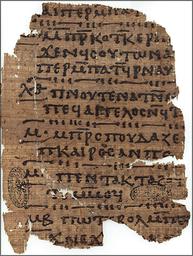
A single element, Pap.vat.dem.1 is a contract for a loan of wheat from 108 BCE. It was transfered to the Library from the Vatican Museum in 1904, along with the other Papiri Vaticani items.
Sources
Biblioteca apostolica vaticana. (2011). Guida ai fondi manoscritti, numismatici, a stampa della Biblioteca vaticana. Biblioteca apostolica vaticana. pp. 473-474
There are 107 items in this collection of Greek Papyri of which 5 have been digitized, and that only a microfilm scan. Some were added in the early 19th C, before substantial numbers of Egyptian manuscripts became available, but the bulk were added in the 20th C. In 1961 Jean Doresse donated what would become Pap.vat.gr.24-79, and Pap.vat.gr.64-105 are Ptolemaic examples extraced from cartonnage.
Sources
Biblioteca apostolica vaticana. (2011). Guida ai fondi manoscritti, numismatici, a stampa della Biblioteca vaticana. Biblioteca apostolica vaticana. pp. 474-476
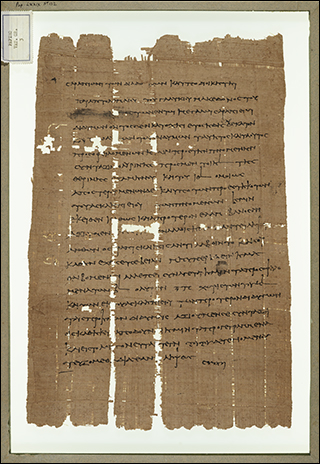
The entire Pap.vat.lat collection of 27 items, 4 digitized, consists of Byzantine legal documents from the archives of Ravenna. These were formerly displayed on the walls of the Sala de Papiri in the Vatican museum, a room special built for the purpose between 1771 and 1775. The image to the right is from the early part of Pap.vat.lat.6, part of the a document recording a donation to the Church of Ravenna by one Sisevera, a Goth. A transcription of the text, written in New Roman Cursive, can be found in ChLA XXi, #717
Sources
Biblioteca apostolica vaticana. (2011). Guida ai fondi manoscritti, numismatici, a stampa della Biblioteca vaticana. Biblioteca apostolica vaticana. pp. 476-478

This collection contains 4,688 manuscripts with 64 digitized. The bulk of the collection is in Latin, French, and Italian, but five are in Greek (Patteta.1 - Patteta.5). It was bequeathed to the Vatican in 1945, upon the death of the noted book collector Federico Patetta (1867-1945).
Sources
Biblioteca apostolica vaticana. (2011). Guida ai fondi manoscritti, numismatici, a stampa della Biblioteca vaticana. Biblioteca apostolica vaticana. pp. 481-483
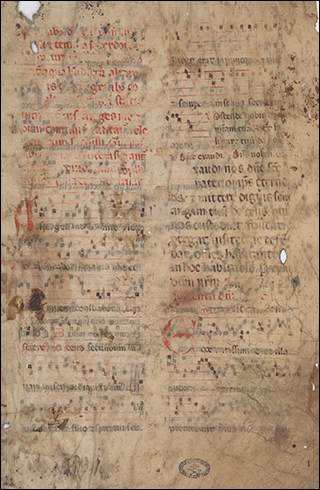
This was a collection of Ethiopic manuscripts donated to the Vatican by Osvaldo Raineri, beginning in 1997 and concluding in 2008. It consists of 233 volumes of which only one has been digitized, and that from microfilm.
Catalogues
Raineri, Osvaldo. "Inventario dei manoscritti etiopici Raineri della Biblioteca Vaticana" in Collectanea in honorem Rev.mi patris Leonardi Boyle, septuagesimum quintum annum feliciter complentis. - ( Studi e testi ; 385) - Città del Vaticano : Biblioteca apostolica vaticana, 1998- P. 485-548 - DOI: 10.1400/238993 - Permalink: http://digital.casalini.it/10.1400/238993
Sources
Biblioteca apostolica vaticana. (2011). Guida ai fondi manoscritti, numismatici, a stampa della Biblioteca vaticana. Biblioteca apostolica vaticana. pp. 499-500
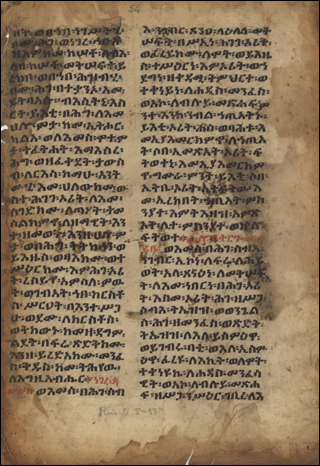
There are 180 manuscripts of the 190 signatures in the collection. The Regensi collection originated with the personal library of Queen Christiana of Sweden, originally a Lutheran, she converted to Catholicism in 1652, at the age of 26. After abdicating the throne, she travelled Europe and eventually settled in Rome in 1655. When she died in 1689, her library was bought by Pietro Ottoboni, the future Pope Alexander VIII. His library was eventually putchased by the Vatican in the mid 18th C, and it was at that point that the Reg.gr. collection joined the Bibliotheca.
Once it was acquired by the Vatican, the collection was reordered and catalogued. The organization is now roughly thematic, with Scripture and other liturgical manuscripts in 1-79, Classical and Byzantine authors in 80-178, and later additions in the last 12 elements, some of which might have otherwise gone into one of the other sections. Unlike the Reg.lat collection, no volumes were added after the Vatican acquisition, the fond has remained fixed since 1751 at least.
Catalogues
The entire fond is was catalogued in 1888 by Stevenson and published as
Codices manuscripti Graeci Reginae Suecorum et Pii pp. II Bibliothecae Vaticanae descripti, recensuit et digessit H. STEVENSON sen., Romae 1888 (Bibliothecae Apostolicae Vaticanae codices manuscripti recensiti), pp. 1-128. This volume is online from The Internet Archive
Sources
Biblioteca apostolica vaticana. (2011). Guida ai fondi manoscritti, numismatici, a stampa della Biblioteca vaticana. Biblioteca apostolica vaticana. pp. 507-509
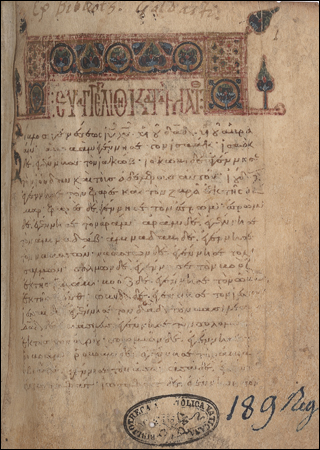
A weirdly named fond, this collection of 55 signatures was neither part of the donation of Queen Christina, nor part of the personal Piccolimi library of Pius II. These are Greek manuscripts acquired at roughly the same time as the Reginensi volumes, and stored in the same room. Today the collection has only 54 volumes, of which 44 have been digitized, the item once known as Reg.gr.Pio.II.19 was transfered back to it's original shelfmark of Pal.gr.193.
Sources
Biblioteca apostolica vaticana. (2011). Guida ai fondi manoscritti, numismatici, a stampa della Biblioteca vaticana. Biblioteca apostolica vaticana. pp. 509-510
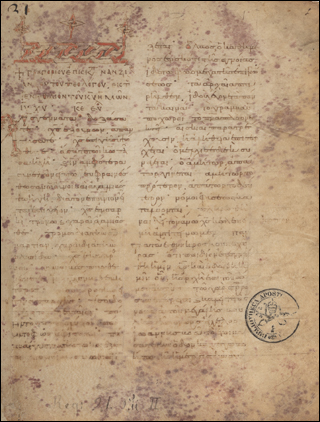
There are 2056 manuscripts of the 2,113 currently digitized. An additional 10 catalogue items are no longer part of the collection. The Regensi collection originated with the personal library of Queen Christiana of Sweden, originally a Lutheran, she converted to Catholicism in 1652, at the age of 26. After abdicating the throne, she travelled Europe and eventually settled in Rome in 1655. When she died in 1689, her library was bought by Pietro Ottoboni, the future Pope Alexander VIII. His library was eventually putchased by the Vatican in the mid 18th C, and it was at that point that the Reg.Lat. collection joined the Bibliotheca.
Catalogues
In the early 20th C, Andreas Wilmart catalogued the first 500 codices in a two volume set, Biblioteca apostolica vaticana. Codices reginenses latini. in Bibliotheca vaticana, 1937. Digital Copies are now avaliable online, Vol. 1, 1-250, Vol 2, 251-500.
All of the collection that was owned by the BAV in 1751 is listed in the inventory of D. Teoli, now shelved as Salacons.Mss.Rosso.385 and available online.
Sources
Biblioteca apostolica vaticana. (2011). Guida ai fondi manoscritti, numismatici, a stampa della Biblioteca vaticana. Biblioteca apostolica vaticana. pp. 510-512
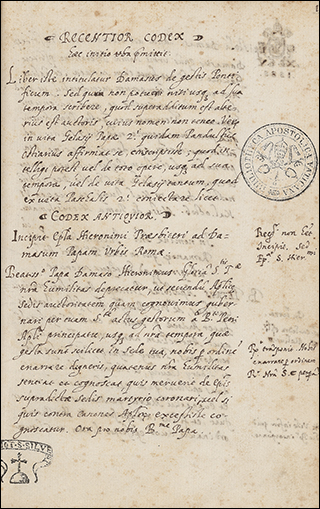
There are currently 1072 manuscripts digitized from the collection of 1,216 items across 1,218 shelfmarks. The collection was donated around the time of WWI by Francesco De Rossi after having been built up in Rome from the middle of the 19th C. It was started by Jean-François Rossi, son of the writer Jean-Gérard de Rossi, around the time of his marriage to Luisa Carlotta of Bourbon-Parma in 1838. It consisted of perhaps 1200 manuscripts and 8500 printed works, including 2500 incunables.
Approximately 800 of the manuscripts are in Latin, with others in a mix, including Hebrew, Persian, Ethiopic, Coptic, Arabic, French, and Greek. The Latin collection is quite strong in religous codices, with 20 Books of Hours already digitized alongside ~60 liturgical works. One major part of that collection comes from the library of Cardinal Domenico Capranica (1400-1458)
Sources
Biblioteca apostolica vaticana. (2011). Guida ai fondi manoscritti, numismatici, a stampa della Biblioteca vaticana. Biblioteca apostolica vaticana. pp. 515-520
https://www.persee.fr/docAsPDF/mefr_0223-4874_1930_num_47_1_7203.pdf
Catalogues
1-58 - Salacons.Mss.Rosso.390 (1) 19th C, German
59-200 - Salacons.Mss.Rosso.390 (2) 19th C, German
201-310 - Salacons.Mss.Rosso.390 (3) 19th C, German
311-451 - Salacons.Mss.Rosso.390 (4) 19th C, German
452-619 - Salacons.Mss.Rosso.390 (5) 19th C, German
620-720 - Salacons.Mss.Rosso.390 (6) 19th C, German
721-847 - Salacons.Mss.Rosso.390 (7) 19th C, German
848-1004 - Salacons.Mss.Rosso.390 (8) 19th C, German
1005-1195 - Salacons.Mss.Rosso.390 (9) 19th C, German
1196-1214 - Not available outside the BAV
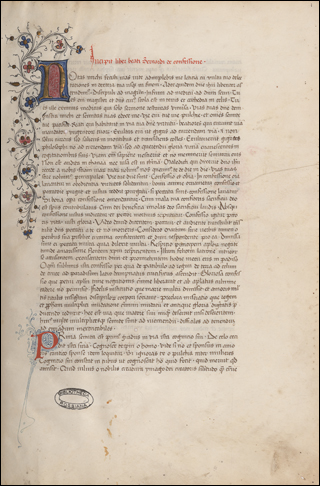
These are the household records of the Papal and Cardinal households. Although there are 432 in the library, according to the inventory produced by Morello in 1973, only one has been digitized, and it is a scan from microfilm. It covers the reigns of Julius III (1550-1555) to Pius IX (1846-1878), though there are several gaps.
Sources
Biblioteca apostolica vaticana. (2011). Guida ai fondi manoscritti, numismatici, a stampa della Biblioteca vaticana. Biblioteca apostolica vaticana. pp. 520-521
This church stands on the Via del Corso, formerly the Via Lata in Rome, across from the church of St. Marcello in Corso and near the Church of the Jesu2. The current building was renovated starting in 1639 by Cosimo Fanzago based on designs by Pietro da Cortona. The library and archive was transfered to the Vatican and contains 984 MSS, covering the 10th - 16th C) as well as 320 later accounting or administrative documents. The remainder of the collection is in the Archivio del Vicariato.
Sadly very little work has been done to digitized this collection, only one volume is scanned, though the cover is shelved separately, yielding two shelfmarks
Sources
Biblioteca apostolica vaticana. (2011). Guida ai fondi manoscritti, numismatici, a stampa della Biblioteca vaticana. Biblioteca apostolica vaticana. pp. 524-527
https://en.wikipedia.org/wiki/Santa_Maria_in_Via_Lata
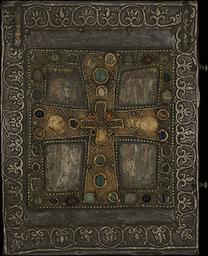
The church of Sainta Maria Maggiore is one of the key Papal basilicas in Rome and the largest church in the city dedicated to Mary. Construction was started under pope Celestine I and consecrated in 434 by Sixtus III. Over the years it has been redecorated and augmented, the current coffered ceilling is gilded with gold from the New World donated by Queen Isabella of Spain 1. The library has been managed by a seperate Archivist Canon since the mid 17th C, roughly 80 men have held that job since 1650. Apart from the documents and manuscripts of the Chapter proper, it contains the archives of the Sistine Chapel, the Pauline College and of the College of the Beneficed Clergy and Clerics, and 120 folders of manuscript scores from the Music Chapel. In 1939 Pope Pius XI had the majority of the archive transfered to the Vatican Library to form this Fond. 2
There are 125 signatures in the collection, renumbered when they were reorganized in 1986. Of those there have been 70 digitized so far. There is some inconsistancy in what was brought over and what remains at the chapter. There is no printed catalogue, but there is a summary catalogue in the appendix to Victor Saxer's Book
Catalogues
Saxer, Victor. « Appendice VIII. Le fonds de Sainte-marie-majeure à la Bibliothèque Vaticane ». Sainte-Marie-Majeure, Publications de l’École française de Rome, 2001, https://doi.org/10.4000/books.efr.1119
Sources
https://ceilingsineurope.weebly.com/blog/santa-maria-maggiore
http://www.vatican.va/various/basiliche/sm_maggiore/en/archivio/archivio_storico.htm
Biblioteca apostolica vaticana. (2011). Guida ai fondi manoscritti, numismatici, a stampa della Biblioteca vaticana. Biblioteca apostolica vaticana. pp. 527-530
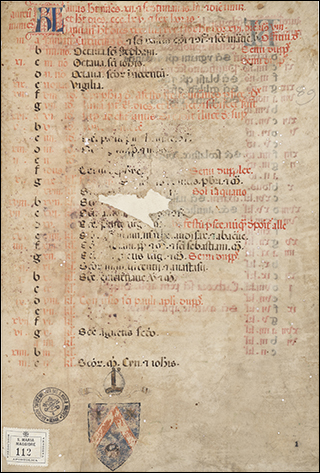
Paul Sbath (Būlus Sbāṭ) was a Syrian Catholic priest, born in Aleppo in 1887 he died in October of 1945. He begain collecting manuscripts around 1912 and accumulated 1,325 during his life. Of those more than 90% were in Arabic, the rest in Syriac, Turkish, Persian and a smattering of other languages. From his collection he donated 776 to the Vatican, with the assistance of Cardinal Eugène Tisserant, in 1926, forming the Fonds Sbath.
This collection spans 776 shelfmarks, but today there are only 773 volumes in the Fond, of which 48 have been digitized. The three lacking are Sbath.339, not part of the donation, and Sbath.683 and 772 which were fragments taken from Sbath.689, and returned to that volume.
Sources
Biblioteca apostolica vaticana. (2011). Guida ai fondi manoscritti, numismatici, a stampa della Biblioteca vaticana. Biblioteca apostolica vaticana. pp. 530-532
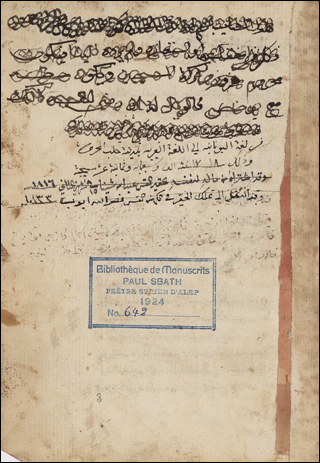
Marie-Dominique Sire, born in 1827, was a priest of the Society of Priests of Saint Sulpice, dying in 1917. He was involved in the project that eventually lead to the Bull Ineffabilis (of Sept. 8, 1854), proclaiming the Immaculate Conception of Mary to be Dogma. After the proclemation, he started a project to translate the Bull into all "living" languages, and donate the product to the Pope. From this a donation of 84 manuscripts became the Fonds Sire of the BAV, with a further 23 volumes lost. Sire even comissioned a special bookcase for the Sala dell'immacolata to contain the volumes, see image to the right. For far more detail, please see Duval-Arnould, Louis, sac., 1933- "La collectione «Sire» de la Bibliotèque Vaticane", In Miscellanea Bibliothecae Apostolicae Vaticanae IX, 2002. pp. 115-168.
There are currently 29 volumes digitized out of the 84 signatures, consisting of 83 volumes and Sire.L.16, which is only a binding.
Sources
Biblioteca apostolica vaticana. (2011). Guida ai fondi manoscritti, numismatici, a stampa della Biblioteca vaticana. Biblioteca apostolica vaticana. pp. 532-535

1,779 signatures covering 1,772 items. About 70 items are split into multiple volumes.
pp. 550-553
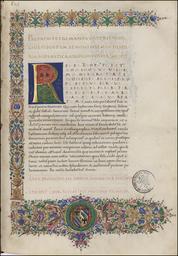
9 signatures. These volumes are in Cyrilic and date primarily from the 17th-19th C.
pp. 646-648
116 signatures, only 110 volumes. Of the six missing volumes 51 had been lost by the first curator Gaetano Marini (1800-1808, died 1815), and 31 and 80 are lost. The shelfmark Vat.copt.51 was reassigned in 1937, but once again made vacant by the transfer of that volume to the Coptic Papyri collection, becoming Pap.vat.copt.1. Numbers 112-114 were transfered at the same time, becoming Pap.vat.copt.5-7.
pp. 568-573
Catalogues
Codices Coptici Vaticani Barberiniani Borgiani... vol. 1
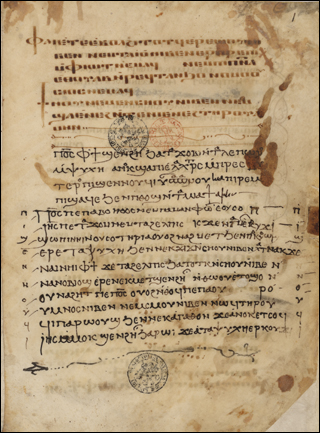
There are currently 141 digitized of a total of approximately 171. As this collection is one of the rare ones that is in active development, with 7 volumes purchased in 2019 alone, the current total is unknown. The fond contains mostly Chinese manuscripts, but also ones from Japan, Vietnam, Mongolia, and Tibet.
Sources
Biblioteca apostolica vaticana. (2011). Guida ai fondi manoscritti, numismatici, a stampa della Biblioteca vaticana. Biblioteca apostolica vaticana. pp. 579-582
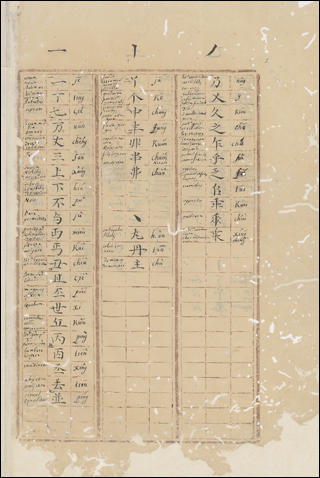
2,672 signatures, only 2,649 elements. This fond consists of 18 seperate collections grouped together, including books owned by Antonio Carafa and Fulvio Orsini, those of the collection of the Collegio Greco, and many more.
pp. 584-615
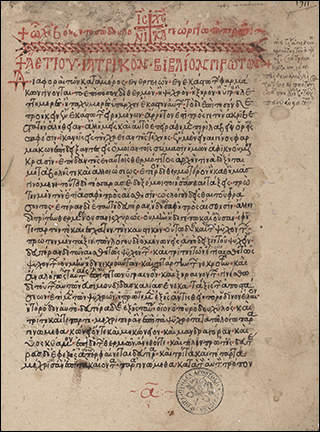
77 signatures, 74 volumes. This fond contains books from the Indian subcontinent, Indochina and the Indonesian islands.
pp. 616-622

1 signature. This fond was created in 2004 to better organize manuscripts from Indochina. Its lone volume, which was previously Vat.estr.or.14 was a gift to Pope Paul VI in 1973

There are 15,379 signatures, covering 15,625 volumes, of which 10344 have been digitized. It can be broken down into several sections:
1-4888 - The oldest part of the collection, added to the library in the 15th and 16th C.
4889-9851 - Newer volumes, bought or donated from the 17th-19th Century, roughly the pontificate of Paul V through Pius IX.
9852-15379 - Current additions. These volumes have been added since roughly the 1870s. After the Resurgamento and the election of Leo XIII, the Library began a more organized approach, including a formal cataloging initiative of the Vat.lat fond, work which is ongoing today, with the catalogue covering Vat.lat.14666-Vat.lat.15203, manuscripts collected 1964-1987, being published in 1989.
Reading Room Catalogues
Some of the old hand-written catalogues have been microfilmed, and then digitized, and made available. These are in the language and script of the cataloguer and some are easier to read than others
1-344 Salacons.Mss.Rosso.301 (1)
345-607 Salacons.Mss.Rosso.301 (2)
608-1318 Salacons.Mss.Rosso.302
1319-2141 Salacons.Mss.Rosso.303
pp. 623-640
Printed Catalogues
Formal printed catalogues of the collection have been published irregularly. If the volume is out of copyright in the US, a link is provided to an eBook version
9734-9782 Marcus Buonocore. 1988
9852-10300 Vattasso and Carusi, 1914
10301-10700 Vattasso and Carusi. 1920
10701-10875 - Iohannes Baptista Borino. 1947
10876-11000 - Iohannes Baptista Borino. 1955
11266-11326 - Maria Magdalena Lebreton, Aloisius Fiorani. 1985
11414-11709 - José Ruysschaert. 1959
14666-15203 - Ambrogio M. Piazzoni, Paolo Viann. 1989
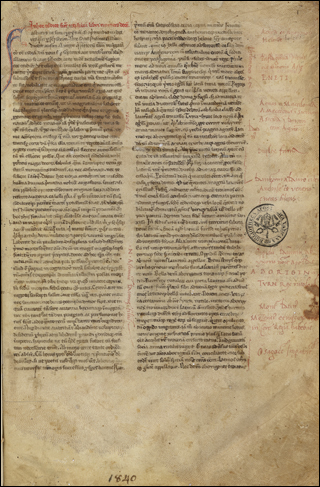
A single element, described as a Qulasta or collection of liturgical texts, is of unknown source but was probably brought into the library between 1939-1957, due to the binding having the arms of Pius XII.
pp. 640-641
446 signatures, 428 elements. Many of the missing signatures were transfered into the Vat.arb and Vat.pers collections.
pp. 658-663
